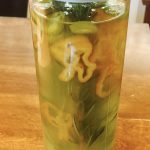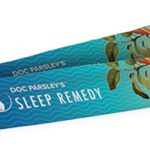Why Every Heart Needs An HRV Monitor, Part 2.
I see a lot of folks burning themselves out and ruining their health by doing one or all of the following: over exercising, overworking, eating poorly, and not sleeping well. I call these people “stress addicts”; they can’t let themselves slow down. If you feel like you may be running yourself thin, there are some simple tests and tools we can use to assess your overall stress load and monitor it from day to day. First and ideally, I recommend that we do an Adrenal Stress Panel lab test, to evaluate your general stress levels and their effect on your body. Second, a key tool to acquire this information is a heart rate variability monitor (BioForce HRV), which allows you to monitor yourself on a day to day basis and over time. This tool is essential in efficiently bringing people out of chronic stress situations. Even if you are not stressed, the BioForceHRV is the best way I know to determine your day to day training readiness and avoid getting into “sympathetic overload”. In fact, not only would the Bio Force HRV give you great feedback for training, it would also help you self-assess for daily lifestyle enhancement. It is the one tool I wish everybody had.
Last year I listened to Joel Jamieson on Robb Wolf’s Paleo Solution Podcast and was impressed with what he had to say about heart rate variability and training. I checked it out and the more I learned, the more I liked the idea. I am going to give you a simple and practical rundown on how the BioForce HRV works. A lot of the stuff about HRV is very technical and confusing. So, for all you propeller heads out there, here is my disclaimer: this may be an oversimplified view, but the goal is your basic understanding of how the BioForce HRV works.
Let’s look at some definitions, characteristics, and how they look on the BioForce HRV.
- Heart Rate Variability (HRV) – The physiological phenomenon of variation in the time interval between heartbeats. It is measured by the variation in the beat-to-beat interval. (Wikipedia)
- Stress – An organism’s response to a stressor such as an environmental condition or a stimulus. (Wikipedia). For our purposes stress comes from emotions, overexercising, poor diet, poor sleep, and pain.
- Homeostasis – The ability of the body or a cell to seek and maintain a condition of equilibrium or stability within its internal environment when dealing with external changes. (Biology Online)
- Sympathetic Nervous System (SNS) – That part of the autonomic nervous system that tends to act in opposition to the parasympathetic nervous system, as by speeding up the heartbeat and causing contraction of the blood vessels. It regulates the function of the sweat glands and stimulates the secretion of glucose in the liver. The SNS is activated especially under conditions of stress. (The American Heritage® Science Dictionary Copyright © 2005)
Characteristics. Known as the “fight or flight” response the sympathetic nervous system increases heart rate, raises blood pressure, diverts blood flow to muscles, releases sugar and fats into the bloodstream, inhibits digestion, reduces apetite and dilates the pupils.
Bio Force HRV reading and the SNS. Dominance of the sympathetic nervous system is signaled by LOW heart rate variability. The heart is MORE metronomic and the beat to beat interval is regular. When the HRV is relatively lower, your stress is typically higher. I think of low HRV as the heart beating in a narrow hallway…like it is “under pressure.” - Parasympathetic Nervous System (PNS) – The part of the autonomic nervous system that tends to act in opposition to the sympathetic nervous system, as by slowing down the heartbeat and dilating the blood vessels. It regulates the function of many glands, such as those that produce tears and saliva, and stimulates motility and secretions of the digestive system. (The American Heritage® Science Dictionary Copyright © 2005)
Characteristics. The PNS works by mellowing you out and helping you recover. It also works in a compensatory way by kicking in when we get exposed to illness, or when stress is extremely high. If I could put a picture on it, it would be the dog rolling over on it’s back in hopes of forgiveness. It slows the heart rate, decreases blood pressure, dilates blood vessels, up-regulates energy storage, stimulates digestion, makes you hungry, and constricts your pupils.
BioForce HRV reading and the PNS. High variability is generally good. Your physical and mental readiness to tackle the day and your workouts are good. If you consistently get very high readings or a sudden high reading, it is a sign that the PNS is compensating for something. It is forcing you to slow down, by signaling the body to slow, and if this becomes chronic, it can be very dangerous and is a sign of long term high stress.
Tracking Training Readiness Made Easy…
If all the preceding definitions make your head spin, BioForce makes tracking of the autonomic nervous system easy. The BioForce HRV works with iPhone, iPad, and Android devices. Generally, you have a chest strap to put on and the signal of your heart beat is transmitted to your device. Each morning (the best time) you take your heart rate for 2.5 minutes. The HRV will give you a color coded light to let you know your cumulative stress and training readiness. It basically gives you a green light, meaning “go”! An amber or yellow light means be a little “less gung-ho”, and the red light means “take a break”. The bottom line is that if you haven’t created readiness through lifestyle choices, the HRV will remind you! Remember, these signals are feedback, I wouldn’t skip any important events just because your HRV is not right, but generally it is a great tool to listen to!
Our body is constantly seeking to bring itself into homeostasis, but in our current environment with new and more inputs all the time, it becomes increasingly difficult for the body to adapt to our modern way of life. The key to survival, I think, is monitoring ourselves, taking advantage of feedback and being conscious of what is good for us and what is not.
I am thankful there are guys like Joel out there who are pushing technology to track some of the most elusive and important systems of out body so we can be Strong, Healthy and Happy.
NEN Workout:
5 push ups, 5 sit ups and 5 air squats- 10 rounds. ~GO!
*Please warm up accordingly.









